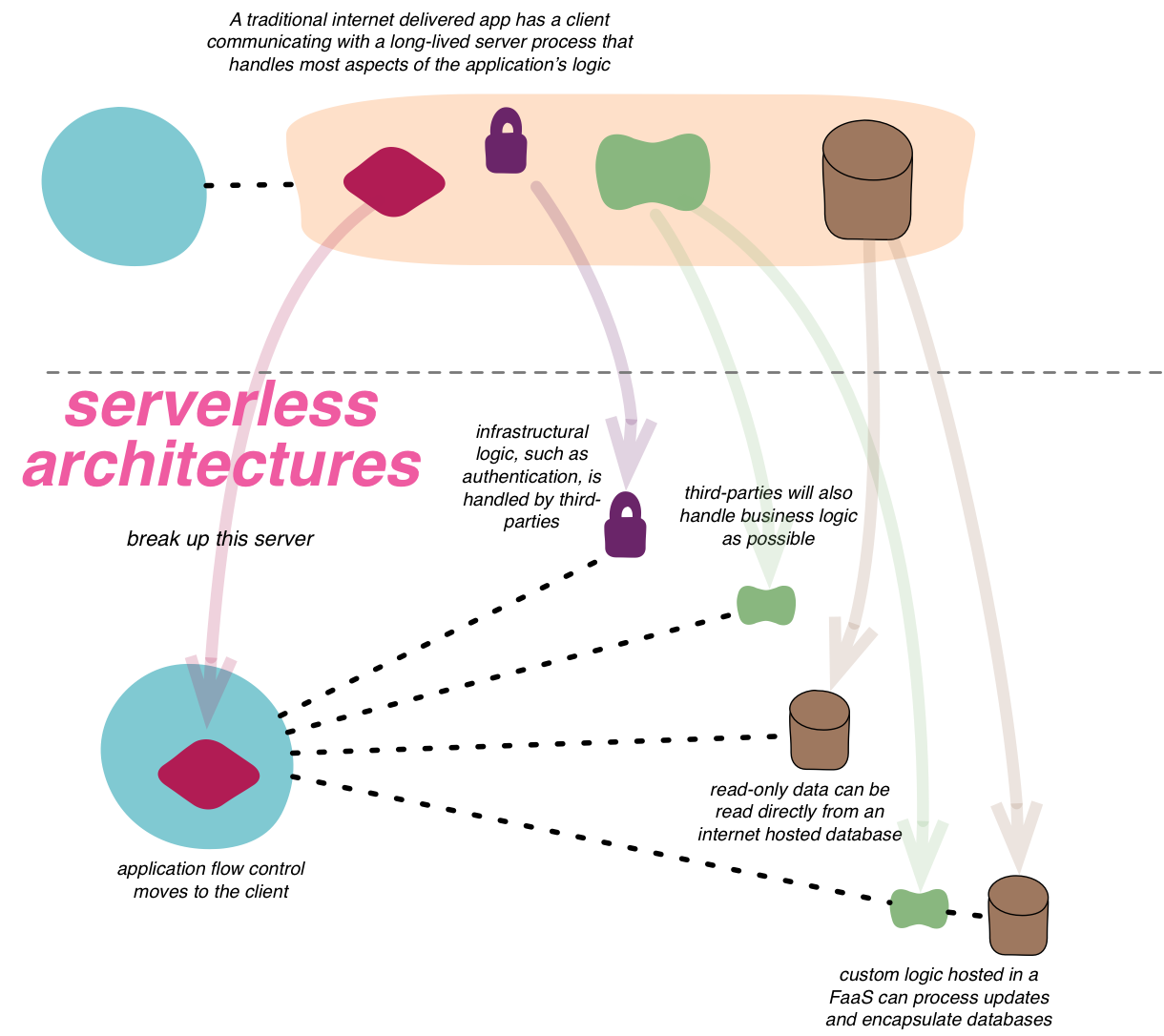TECH

Serverless: trend or hype?
Can you imagine a world without servers? In the last article I talked about the cycle of hype, and how to distinguish what is exaggerated from what is commercially viable. This time, we will highlight a topic that has been considered increasingly important in software architecture and which appears among the innovations that must conquer the market in the next two to five years: serverless technology, or Function as a Service (FaaS).In computing, the server is software or device that provides infrastructure and provides functionality for other client programs or devices. The term emerged in the late 1960s and lasted until the 1990s, when telecommunications companies, which previously offered dedicated point-to-point data circuits, began to offer quality virtual private network (VPN) services comparable, but at a lower cost. The symbol of a cloud began to be used at this time as a demarcation point that distinguished the actions of responsibility of the provider and those of responsibility of the user.In 2006, Amazon officially launched the cloud computing concept with the Elastic Computer Cloud (EC2) technology, the core platform of its subsidiary Amazon Web Services (AWS). AWS is the arm of the company that has delivered on-demand cloud computing to individuals, businesses and governments under a paid subscription model. In 2014, Amazon introduced AWS Lambda, a serverless, event-driven platform capable of executing codes in response to occurrences and automatically managing the computing resources required by the running program.
Has the server disappeared?
Despite the ambitious name, serverless computing does not actually eliminate the servers. Serverless computing is similar in principle to leading edge computing because it brings typical server functionality to local devices and is a natural extension of the cloud concept. The term serverless is, however, an improper name in a technical sense. When it comes to managing and reducing expenses, serverless computing can simplify operations and reduce server-related costs.
Simply put, if you are not maintaining or managing your own infrastructure to run your application, you pay for it as it is (never for inactivity), you get the required level of high availability, scalability, and fault tolerance automatically from the vendor, so you're running a serverless application.
Serverless vs Containers
There are many similarities and differences between containers and serverless technology. Serverless is a cloud computing code execution model in which the cloud provider completely manages execution in a granular way, invoking functions individually, unlike the more traditional server running a long running application.Virtualization, cloud computing, and even the containers were designed to empower business-class technology, delivering applications faster than ever before. These technologies have led us to concepts such as serverless, or Service-like (FaaS), which essentially seeks to abstract the need for the usual "always-on" server system behind applications. But even a serverless system needs to run on a computer somewhere. It's this massively scalable infrastructure that helps turn all the benefits of today's generation of abstraction, reusable services, and composite applications into rapid development and digital transformation.Like hosted platforms like AWS Lambda, FaaS allows developers to focus more on building applications than on infrastructure management. Through open, collaborative platforms such as Apache OpenWhisk, developers can build and deploy their own serverless / FaaS platform anywhere they wish - whether it's self-hosted or cloud provider.
How OpenWhisky Works
Red Hat is contributing to Apache OpenWhisk, an open-source, serverless cloud platform that lets you run code in response to events at any scale. The system can be run on Red Hat OpenShift and handles the infrastructure and servers so developers can focus on building value-added codes rather than spending hours on architecture and server management.With OpenWhisk, you can develop software in hours rather than weeks in your preferred language, and you can combine custom code with plug-and-play packages from a rich ecosystem of support services. In addition, package builders can easily add their services to the growing OpenWhisk ecosystem, which at the same time eliminates the need to build internal solutions for third-party integration and increases the reach of a broader community of developers and the adoption of their products and services. The Apache OpenWhisk community is driven by open source contributors who are advancing in cutting edge technology, building skills, and expanding the boundaries of FaaS technology.The latest Red Hat Summit, held in San Francisco in May, reflects growing interest in technology that abstracts the server into the software infrastructure equation. In its 14th edition, which gathered a record audience of 7 thousand people, the most crowded sessions were those that addressed the serverless system. For all its advantages and benefits, however, it remains to be seen whether the technology is mature enough that we can realize its full potential.
Canaltech.com

No comments:
Post a Comment